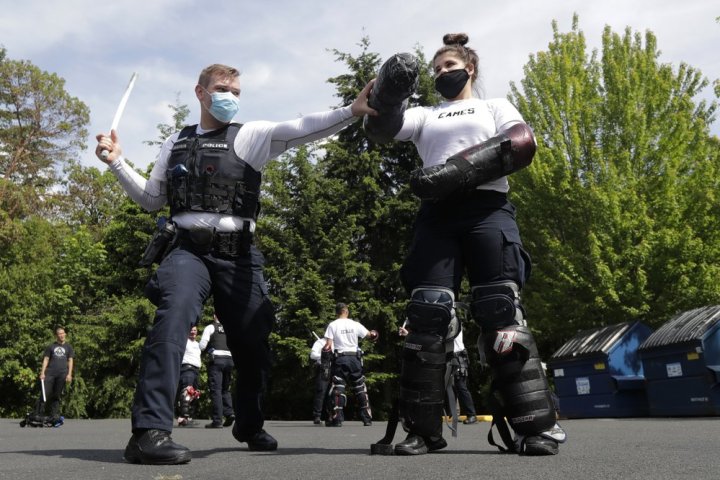[ad_1]

Seattle officers hold down a protester, and one repeatedly punches him in the face. In another run-in, officers handcuff a looting suspect on the ground, one pressing a knee into his neck — the same tactic used on George Floyd.
The officers were captured on videos appearing to violate policies on how to use force just days after Floyd died at the hands of Minneapolis police, setting off nationwide protests.
With calls for police reforms across the U.S., instructors and researchers say officers lack sufficient training on how and when to use force, leaving them unprepared to handle tense situations. Better training can’t fix all the issues facing the nation’s police departments, but experts believe it would have a big impact.
“The skills are not taught well enough to be retained and now the officer is scrambling to find something that works,” said William Lewinski, executive director at Minnesota-based Force Science Institute, which provides research, training and consulting to law enforcement agencies.
Its two-year study of three large U.S. police academies says skills like using a baton or taking down an aggressive offender deteriorate dramatically within two weeks.
A recent Associated Press investigation found that a lack of firearms training has resulted in unintentional shootings by law enforcement. It’s the same problem with use-of-force techniques, Lewinski said.
“Police officers across the country are woefully undertrained,” said Sean Hendrickson, an instructor at Washington state’s police academy in suburban Seattle.
The AP was invited to the facility to see use-of-force training, a component of a 2012 federal agreement to reform the Seattle Police Department after officers were found to routinely use excessive force. The academy is considered one of the more progressive in the country for trying to mirror what officers will face on the streets.
There’s classroom work, and cadets learn to combine skills by play-acting scenarios. In an old building decorated to look like an apartment, one officer plays the offender and others try to deescalate tensions, take away his weapon and put him in handcuffs.
In a parking lot, officers pair off. One wears padding on their shins and the other practices swinging a baton, hitting low on the legs.
They also learn to arrest someone who’s fighting back. An instructor plays the suspect, with one officer bear-hugging his legs and another wrapping his arms around him to take him to the ground. That officer presses against him chest to chest until he “wears himself out,” instructor Rich Lee said.
Then they flip him over, still holding his legs, with an officer’s knee in the center of his back as they handcuff him.
[ad_2]
Source link
Dear readers, we really need your support to keep on serving you with authoritative, truthful, and juicy stories everyday. For your support, please reach out to the editor @gavelinternational66@gmail.com

